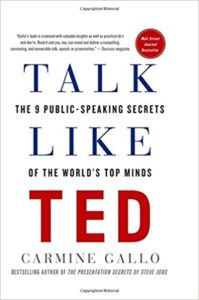Conversational Blogging Takes Practice – Part A

When Dr. Jill gave her TED Talk in Indianapolis, reports Carmine Gallo in Talk Like Ted, her presentation seemed natural, authentic, animated, and conversational. Counter-intuitive as that may seem, Gallo explains, “Conversational delivery takes practice. Dr. Jill rehearsed her presentation not once, twice, or even 20 times. She rehearsed it 200 times!” Gallo notes.
Dr. Jill went through several important steps in preparing to deliver that TED talk, Gallo says:
- walking the beach with a notepad, writing down words and ideas
- reading what she had written out loud to feel how the words and sounds worked together
- typing out the notes she’d written in longhand
- condensing the material into five major points
- figuring out how to deliver the message in a visual, interesting, and entertaining way
- rehearsing, rehearsing, rehearsing
As a blog content writer, I often explain to clients and to newbie blog writers that that blogs, unlike brochures, client newsletters, online magazines, and websites, are short and concise, less crafted and more casual and conversational than other marketing pieces. In fact, that’s what makes it so feasible to use blogs to achieve the frequency that’s needed to win online search engine rankings – there simply aren’t as many steps to the process.
But, as Gallo so aptly points out, “conversational” still takes practice. It may not be feasible to create 200 different iterations of each blog post, yet in great part, the steps Dr. Jill in preparing for her conversational TED talk can prove extremely valuable in blog content writing.
While walking the beach with a notepad may not always be feasible in the Midwest, idea generation begins the blogging process. “The best blog ideas often happen during a conversation, in the shower, or while listening to a seminar. Don’t fight it. Instead, have a method for capturing these ideas so you can save them for later,” advised Michael Reynolds in a guest post for Say It For You.
Condensing is a crucial step in blog marketing; the rule I cite when offering business blogging assistance is simply: “Make blog posts as long as they need to be to get the point across (and just one or two points should be emphasized in each post to begin with), but not a single sentence longer.
Conversational blogging may not take all the prep time of TED talk, but it certainly takes practice!





Follow us online!